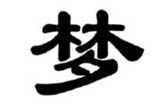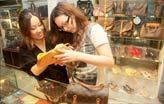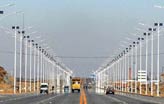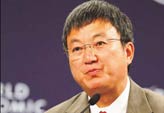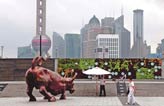But who is in the driver's seat?
Updated: 2011-09-20 10:47
By Oliver Barron (China Daily)
|
|||||||||
BEIJING - China is stuck in a policy vacuum. While consumer price index (CPI) growth moderated to 6.2 percent in August from 6.5 percent in July, the current level remains stubbornly high and well above the annual target of 4 percent, meaning policy loosening is unlikely. Declining CPI simply means that further tightening can be put on hold, for now.
However, the decision on what to do next is not the People's Bank of China's to make. At a time when inflation is beginning to moderate and vigilance is still needed, the central bank is no longer in the driver's seat of China's economy. What may be even more worrying for Chinese authorities is who is. It's not the usual suspects of the State Council, China's Cabinet, or even the Politburo Standing Committee, China's top leadership. Right now, it is the US Federal Reserve.
The big day for China, just like the rest of the world, is Sept 21, when the Federal Reserve next meets to discuss whether it will implement new policies to support growth in the world's largest economy. Over the past year foreign currency inflows have been the biggest variable affecting China's monetary policy decisions, and any sign of a new round of quantitative easing could mean that China will have to continue to tighten policy, rather than loosen it.
However, the idea of further tightening is a frightening one for the government because the growth in M2, the main indicator for money supply, fell to 13.5 percent year-on-year in August, the lowest it has been since May 2005 and the fifth straight month it has been below the government's full-year target of 16 percent. With the growth in the money supply continuing to decline and long-term bank lending remaining anaemic due to concerns over the health of local government balance sheets, China's monetary conditions are no longer accommodating to growth.
While all of this is certainly a headache for Chinese policymakers, the real predicament can be found elsewhere. It is too easy to forget that the real story of inflation is not 6.2 percent versus 6.5 percent. It is not what the Federal Reserve or People's Bank of China will do. The real story of inflation is what is happening to the cost of food for ordinary people. While the headline numbers show that food prices rose 13.4 percent year-on-year in August, this does not paint the full picture.
Food prices on the street are rising fast. In Beijing, the price of the egg pancake I eat every morning for breakfast has risen from 2 yuan (0.23 euro) last year to 2.5 yuan. The cost of every item in the State-owned enterprises canteen where I eat lunch has risen by somewhere between 20 percent and 50 percent.
Outside Beijing the situation is worse. I recently spent a weekend in Shangqiu in Henan province, one of the main agricultural provinces in central China. There, price rises are even more severe. Apples are now 3 yuan a jin (a standard measurement in China equal to 500 grams), and eggs have risen to 4.2 yuan a jin, both about 50 percent higher than a year ago. Even the price of rice, a staple of every meal, has risen by more than 60 percent.
To make matters worse, many companies, including State-owned enterprises, have made promises of wage increases that they have yet to fulfill, meaning wage growth has not kept pace with the increase in food prices. So while the government and its many commentators can discuss monetary policy until the cows come home, what China really needs is higher wages.
The author is a financial analyst at the London brokerage house North Square Blue Oak.
For China Daily






